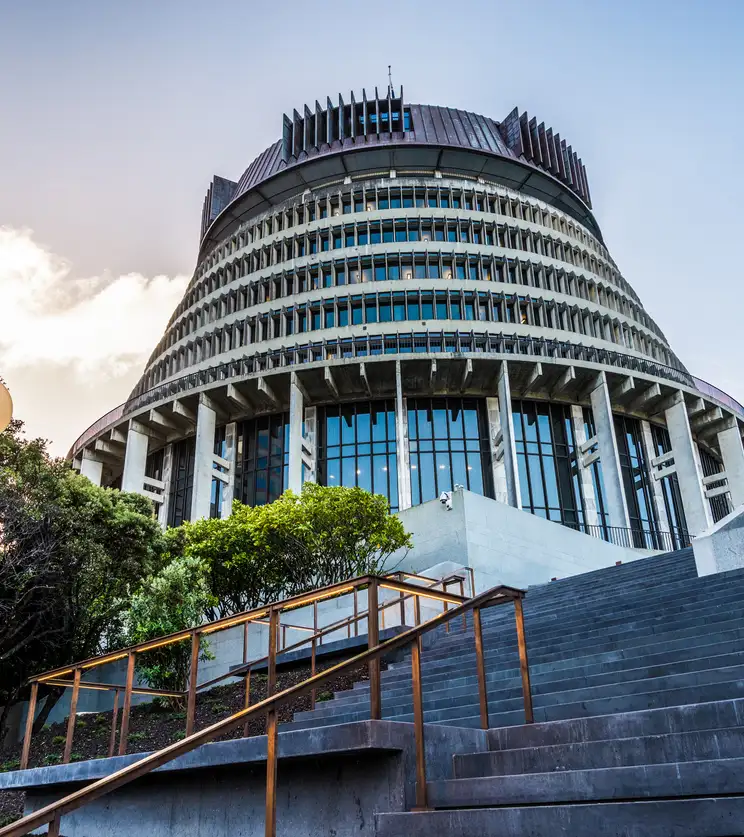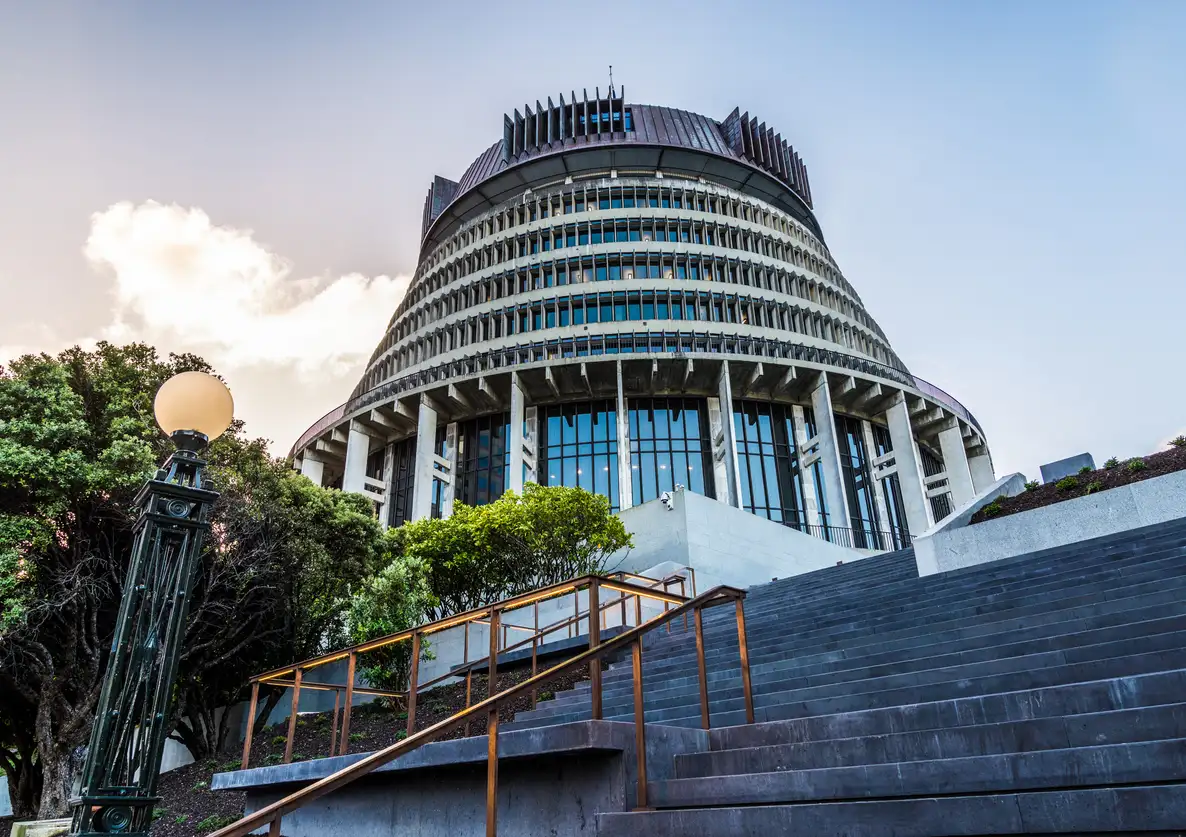Analysing Budget 2024: A closer look at local government impacts



30 May 2024
Below we list key aspects of the Budget that will be of most interest to local government. The amounts noted are for the current and following four financial years.
Local government funding and financing
- There was no commitment from the Government to additional funding or financing tools for local government. However, we have found strong indications within the Budget documents that sharing a portion of GST on new builds with councils and other housing growth incentives are on the way soon.
- As part of budget legislation, the government will amend the Public Finance Act 1989 to increase from 10% to 14% the percentage the Crown retains (as fines collection costs) from amounts of fines recovered for offences prosecuted by or on behalf of local authorities and other organisations.
Infrastructure
New funding
- $7b top up to the Multi Year Capital Allowance – $7.5b total for future infrastructure projects. This money hasn’t been allocated to any projects yet.
- $5m for the establishment of the National Infrastructure Agency. The Budget says that the new agency will “deliver functions that address key gaps in the infrastructure system: procurement and delivery of complex projects, shopfront for private investors and co-ordination and governance of infrastructure funds. The establishment of these functions is a fundamental enabler for the Government to deliver on its key infrastructure priorities, including Public Private Partnerships and City Deals.”
- $40.7m allocated to implementing Local Water Done Well. The funding is set aside for central government’s work on policy development, legislation, financing settings, economic regulation and water safety regulation.
Regional Infrastructure Fund
- Regional infrastructure fund (RIF) – $200m allocated for flood resilience projects (this is covered in more detail under climate change resilience); other $1b of the fund unallocated but Government confirms it will seek to co-invest with it, as previously signalled. Note that $300m is allocated as operational expenditure despite signals pre-Budget that this would be a capital fund.
- RIF will have two project categories for funding allocation – resilience infrastructure and enabling infrastructure. Some funds will remain unallocated to “respond to emerging priorities over the life of the fund”.
- RIF will primarily support projects with funding requests ranging from $1 million to $50 million, while remaining flexible to consider larger projects that align with regional and national priorities.
- The RIF will prioritise projects that are not eligible for funding from other government agencies, filling critical gaps in regional infrastructure development.
- The RIF will create Crown and regional assets through a mix of loan, equity and grant investments – despite pre-Budget assurances that the fund would be capital-only. Details of this haven’t been worked through yet.
- Further details on assessment criteria for the RIF to be announced at the end of June, with applications opening on 1 July.
Reductions in funding
- Closure of the National Resilience Plan and the Climate Emergency Response Fund – for the former, Minister Bishop outlined in his PR that funding would be “[returned] to Budget allowances so that decisions over climate and resilience investments can be made through the normal Budget processes, to ensure greater transparency and that funding is going to the highest value proposals.”
Transport
Note – this is limited to changes to funding outside the National Land Transport Programme – changes within the NLTF will be announced once the GPS is finalised later this year.
New funding
- Additional $2.68 billion in transport spending over and above the $20.7b spending signalled in the draft GPS, including:
- $1.0 billion to accelerate the delivery of Roads of National Significance and major public transport projects.
- $939.3 million to repair roads damaged by last year’s severe weather events in the North Island ($330m of this is for local roads, while $609.3m is for state highways).
- $266.9 million to upgrade and maintain the metropolitan rail networks in Auckland and Wellington.
- $200 million to support KiwiRail to carry out maintenance and renewals on the national rail network.
- $10 million for Airways New Zealand to complete the minimum operating network of Ground Based Navigation Aids.
- $44 million to support the Civil Aviation Authority to carry out core functions while fee and levy rates are under review.
- $23.1 million to support critical frontline rescue services to respond to severe weather events and emergencies.
- $63.6 million to support Surf Life Saving New Zealand and Coastguard New Zealand.
- Refocusing $59.7 million of existing funding over the next four years towards decarbonising the bus fleet, including zero emissions buses and charging infrastructure, and improvements to bus driver safety and working environments.
Reductions in funding
- $180 million in operating expenditure associated with resilience improvements to the Palmerston North to Gisborne line and North Auckland line following the North Island weather events. The return of this funding offsets cost pressures for critical maintenance and renewals on Auckland and Wellington metropolitan rail lines.
Resource management
New funding
- $92.2 million allocated to deliver the Government’s resource management reforms, including fast-track consenting legislation, Resource Management Act (RMA) 1991 amendments, updates to national direction and RMA replacement legislation. Funding is provided in outyears for ongoing operation of the resource management system to support system change.
2023 North Island weather events recovery
New funding
- $609.3 million over three years to complete state highway recovery works in areas affected by the North Island weather events, ensuring that roads are restored to their previous condition.
- $330 million over two years to continue the response and recovery work on local roads that were affected by the North Island weather events (this is the same allocation as was outlined in the Transport section above).
- $27 million for removal and treatment of woody debris in Tairāwhiti that presents an ongoing risk to life, infrastructure and properties.
- $16.1 million in new funding for one year to support councils’ capability to speed up critical recovery functions including voluntary buyouts, flood protection, landslip remediation and local transport.
- $10m toward completing the remaining essential clearance of Hawke’s Bay sediment and debris on residential and commercial property.
- Additional funding to support restoration of Māori whenua, marae and other cultural assets severely affected by the 2023 North Island weather events.
- $240 million investment in a Primary Producer Finance Scheme, which will provide funding for eligible land-based primary producers that were severely impacted by the North Island weather events in early 2023.
Climate change and climate resilience
New funding
- $200 million in grants and loans to co-fund flood resilience as asked for by Regional Councils in Beyond the Deluge 2.0. LGNZ has strongly supported this advocacy by Regional Councils. $101.1m will cover 42 listed projects, with the remaining $98.9m to be allocated. The exact mix of loans and grants is yet to be confirmed.
Reductions in funding
- $15.624 million in savings from stopping the Climate Change Commission’s agricultural emissions pricing advisory function (proposed by the previous government) and in reductions to baseline funding for the Commission.
- $35.5 million in savings by reducing funding for the Climate Change Development Fund, Climate Resilience for Māori initiative, the Climate Change Chief Executives Board, implementation of the Carbon Neutral Government Programme and other climate work programmes such as Climate Data Infrastructure and Enabling a Scaled-up, High Quality Voluntary Carbon Market.
- The National Resilience Plan (NRP) has been closed. The NRP, established following the North Island weather event, provided an average of $400 million per annum of operating funding for rebuild and resilience projects. This marks a significant decrease in the available funding for climate resilience.
- The Climate Emergency Response Fund (CERF) has also been closed. CERF provided an average of $200 million of operating funding per annum, raised through the Emissions Trading Scheme, for investment on climate-related initiatives distinct from the main Budget allowances.
- 3D Coastal Mapping – There has been a reduction in the scale of this programme from mapping 85 per cent of the New Zealand coastline to 40 per cent and reducing back-office costs. Approximately $7.4 million of total funding for 3D Coastal Mapping remains per year.
Environment
- The waste disposal levy for municipal landfill will rise to $75 by July 1, 2027, following two $5 increases in 2025 and 2026. The same will apply to construction and demolition fill ($45 by 2027) and managed or control fill ($20 by 2027).
New funding
- Funds from the Waste Disposal Levy will continue to be shared equally between central and local government. The combined central and local government take from the levy will increase to $1.195 billion from $1.025 billion over the next four years.
Reductions in funding
- Waste Minimisation fund – $9.689 million of savings will come from scaling back resourcing for waste minimisation policy and non-levy funded operational work programmes and returning funding for administering waste minimisation projects funded by CERF, along with behaviour change and data projects. The remainder of the savings will be funded by Waste Disposal Levy revenue. It is not yet clear what the impact of this will be on waste funding for councils. This should be clarified when the Government makes amendments to the Waste Minimisation Act 2008, as part of Budget legislation, to expand the scope of activities for which levy revenue can be used.
- $23.6m in savings from returning funding for freshwater programmes to align with the Government’s priorities. These include the Jobs for Nature Secretariat, freshwater investment and implementation of freshwater policy and initiatives under the Essential Freshwater Fund (EFF). The EFF savings return funds that were yet to be contracted or fully distributed. All existing projects and contracts established through the EFF will be honoured. This initiative contributes to the baseline savings target for the Ministry for the Environment.
- $27.2 million cut to the expansion of On Farm Support Services. Funding for the existing service levels will be maintained.
- Department of Conservation’s Contaminated Sites Programme scaled down, total of $8m clawed back over four years. This programme is a workplan to address contamination caused on public conservation land by activities such as mining, landfill, fuel storage/spills, timber treatment, sheep dips, among others.
Read more about identified risks in the Budget Economic and Fiscal Update 2024